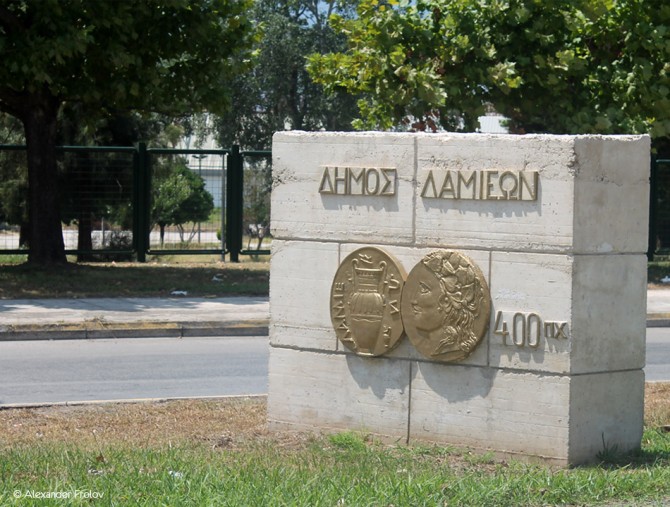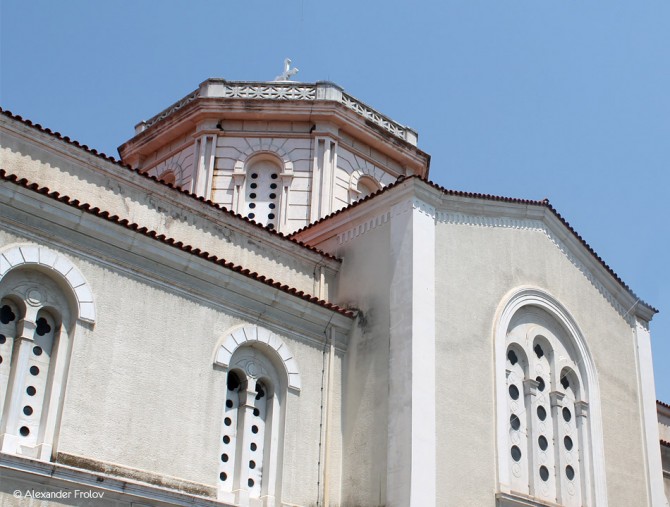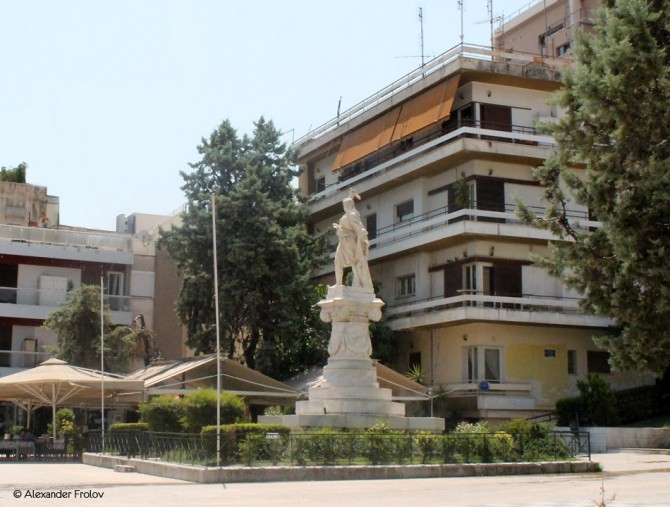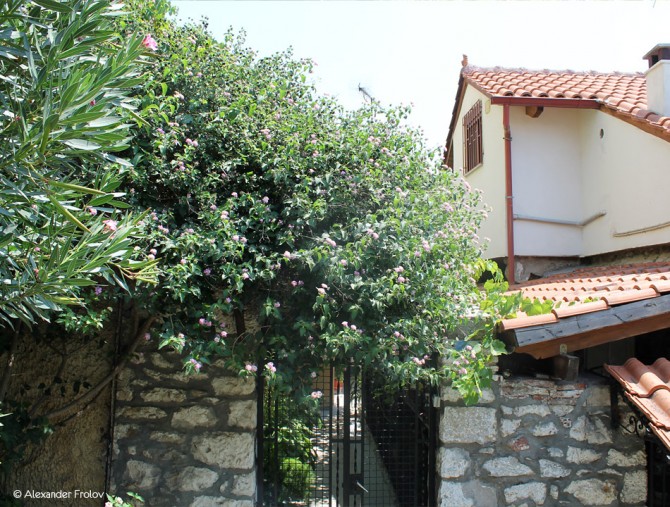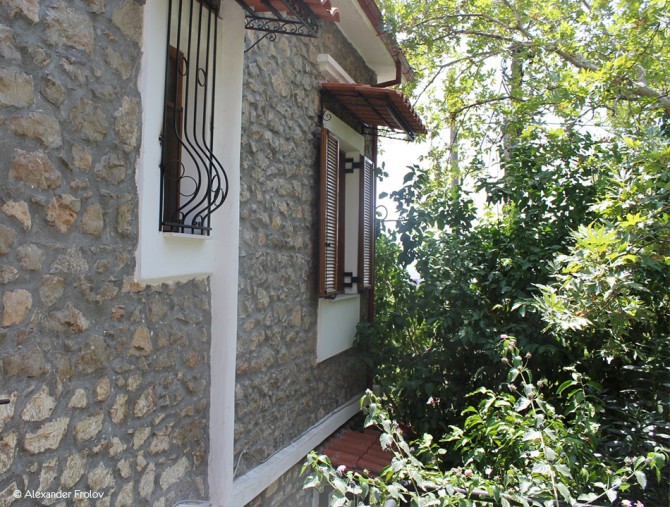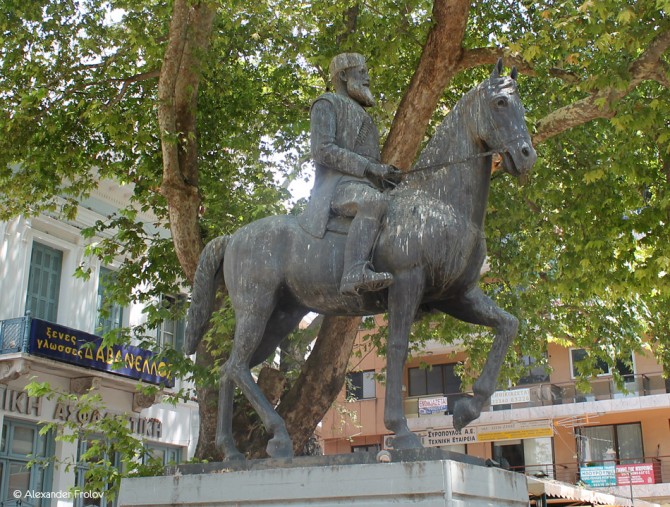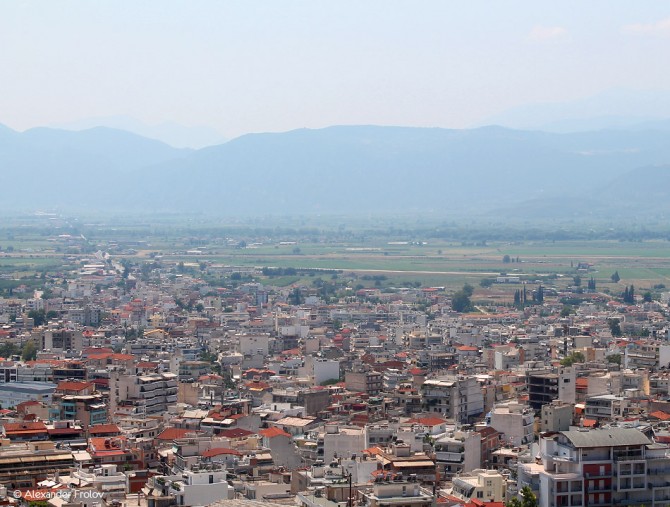Ламия
Город Ламия - это столица области Фтиотида в Центральной Греции. Этот город считается столицей мясоедов. В шутку его называют – город холестерина. В местных тавернах можно отведать немало вкуснейших деликатесов. Это, пожалуй, одна из главных причин интереса туристов. Помимо мяса тут принято пробовать местные орехи, мед, несколько видов сыра (катики, тсалафути), пироги, а также сладкую пшеничную кашу, приготовленную на молоке с добавлением корицы.
Своим названием город очевидно обязан ведьме. Ламия (с ударением на последний слог) - это персонаж греческой мифологии, распространившийся в позднейших культурах. Согласно классическому греческому мифу, дочь Посейдона, Ламия, родила от Зевса Герофилу. Ламия была возлюбленной Зевса, а Гера превратила её в зверя. Когда безумствует, Ламия вынимает глаза и кладет их в чашу, чтобы заснуть; ест людей. Ей была посвящена одноименная пьеса Эврипида.
Ламия - место достаточно древнее. Например жители города нередко участвовали материально в возведении святилищ в Дельфах. Иными словами – это был один из самых мощных полисов Древней Греции, имевший собственную валюту. Ламия находилась в довольно выгодном положении – посередине между южной и северной частями страны. В 323 году до н.э. город был полем битвы Ламийской войны между Македонией и Афинами. Это случилось, когда после смерти Александра Македонского Афины восстали против доминирующей тогда Македонии. О древней истории города можно подробней узнать в местном археологическом музее, где представлены все находки этого региона. Музей расположен в бывшем здании казарм на археологическом сайте у замка. Часы работы музея: 8:30-15:00, стоимость билетов: 2 евро. Кстати замок – это главная достопримечательность города. Изначально он был выстроен как крепость еще в V веке до н.э., однако, свой нынешний облик приобрел во времена Византии соответственно византийцами, франкийцами и турками. Также отсюда открывается захватывающий вид на город и реку Сперхеос, которая также именуется Аламана.
Во времена греческой революции Ламия была центром боевых действий – здесь состоялась знаменитая битва Аламана (по названию реки). Первого апреля 1821 года предводитель греков Афанасий Диакос с соратниками храбро сражались против турок, однако, потерпели поражение. Диакос попал в плен и был препровожден к турецкому главнокомандующему Омеру Врионису. Ему была предложена руководящая должность в турецкой армии в ответ на согласие перейти из православия в ислам. Ответ был категоричен: «я родился греком, греком и умру». На следующий день он был казнен. Его именем в наши дни названо немало мест в современной Ламии. Прочие парки и площади также носят имена героев революции и, конечно же, на них расположены статуи. Из религиозных памятников можно выделить храм Успения – эта трехнефная базелика была построена в 1861 году. На площади Элефтерияс (Свободы) расположено немало кафе, где собираются жители города, в местном фольклорном музее можно посмотреть артефакты из жизни этого региона. Музей расположен на улице Макригианиса, 6. Часы работы: 8:00-14:00 по будням, вход бесплатный.
К сожалению современная Ламия – это город без определенного архитектурного стиля, однако, интересные неоклассические здания тут все же время от времени попадаются. Также отсюда можно отправиться посмотреть несколько интерессных мест: мемориал Фермопильского сражения, приморский поселок Камена Вурла (от Ламии 39 км по трассе A1 / E75), горный поселок Ипати, известный своми лечебными водами (21,7 км по трассе E038), а также Национальный парк на горе Оета с озерами, каньонами и множеством млекопитающих (27 км по местной трассе Ламияс-Павлианис). Этот парк нередко называют «греческой Швейцарией».
Как добраться до Ламии:
- на машине из афин (214 км) по трассе А1/Е75
- на автобусе из Афин с автовокзала Лиссион, тел. автовокзала в Ламии: +30 22310 51 345 / 22 310 /51 346
Фото и текст: Александр Фролов
Lamia
The capital city of the prefecture of Phthiotis is mostly known for the abundance of taverns that will welcome you to the planet of the meat eaters: A large variety of meat, cooked with the Greek way, and any kind of local delicacies (oh yes, mainly based on meat) is the main reason that attracts people to visit Lamia and its notorious “street of cholesterol”. However, it would be unfair to connect Lamia only with the food. It has also many other things to offer, such as interesting places to visit in and around the city and a great history.
According to mythology, Lamia took its name from its founder Lamos, who was the son of the mythical hero Hercules and Omfali, the queen of Lydia (ancient country of the Asia Minor). Due to its prominent geographical position, as it is located in the passage between the North and the South Greece, it became known almost from the beginning. Although it was not among the most powerful ancient Greek cities, it had its own currency and often citizens from Lamia participated in great works, such as the construction of the Oracle of Delphi. In 323 BC the city was the battlefield of the Lamian War, between the Macedonians and the Greek cities (including Athens) that revolted against the Macedonian domination after the death of the Great Alexander. If you want to know more about the ancient past of the city, you can visit the Archaeological Museum of Lamia, that hosts all the significant archaeological finds from Lamia and the wider region of Phthiotis. The museum is housed in the preserved building of the barracks, inside the archaeological site of the Castle of Lamia (Archaeological Museum of Lamia, Castle of Lamia. Visiting hours: 8:30-15:00. Ticket price: 2 euros).
The Castle is one of the great sights of the city and the most significant ancient monument of Lamia. It was probably built in the 5th century BC, however it was modified many times by the Byzantines, the Frankish, the Catalans and the Turks (as they consecutively conquered the area). Perched on the top of a rocky hill, the castle overlooks the valley of the river Spercheios and the city of Lamia, so apart from the archaeological interest, it also worth a visit for the amazing view (Castle of Lamia. Visiting hours: 8:30-15:00. Ticket price: 2 euros).
During the Greek War of Independence (the Greek Revolution of 1821), the area of Lamia was the battlefield of the Battle of Alamana (Alamana by the way is the other name of river Spercheios) in April 1, 1821. In that battle, leader of the Greeks was Athanasios Diakos, one of the pioneers of the Revolution. He and his few men fought the Turks with bravery, but they were defeated. The Turks captured Diakos and leaded him to their chieftain, Omer Vrionis. They offered him a prominent position in the Ottoman army if he would agree to convert from Christianity to Islam. Diakos refused, and said the notorious line “I was born a Greek, I will die a Greek”. The Turks executed him the next day, in the most horrible way: They impaled him.
In Diakos’ honor, plenty of streets and squares thoughout Greece are named after him. In Lamia, for instance, the Diakos Square with the cenotaph of the hero is one of the four beautiful squares of the city. The other three are the quaint Laos Square with the plane trees and the statue of Aris Velouchiotis (leader of the Greek Resistence in the 1940s), the central Park Square and the Eleftherias (Liberty) Square with the neoclassical building of the Prefecture and the Metropolitan Church of Assumption, which is a wonderful three-aisled basilica with a dome, built in 1861. In Eleftherias Square you will also find many modern cafes to enjoy your coffee or your drink.
Today Lamia is a modern town without a particular architectural style, although while wondering in the streets, you will see some beautiful neoclassical buildings and old, well preserved mansions. Apart from the places we have already mentioned, you could also visit the very interesting Folklore Museum, where you will see artifacts from the local rural life, traditional costumes, jewels and furniture of the older years. (Folklore Museum, 6 Makrigiannis Street. Visiting hours: Monday to Friday, 8:00-14:00. Free entrance).
Unless you are vegetarian, you will definitely pay your homage in the taverns of Lamia and you will buy as souvenir fine local meats to cook at home, but also other great local products, such as nuts, honey, katiki of Domokos (type of cheese), tsalafouti (other type of cheese), buns, frumenty and pies. Also using Lamia as your basis, you can visit various beautiful places of Phthiotis, such as the picturesque seaside Kamena Vourla, which is a popular summer resort (distance 39,1 km from Lamia, via A/D PatheNeon Athinon-Thessalonikis/A1/E75), the beautiful mountainous village of Ypati, famous for its thermal springs (distance from Lamia 21,7 km, via E038) and the fabulous National Park of the mount Oeta, with the rare herbs, the alpine lake, the torrents, the canyons and the abundance of birds and mammals creating a dreamy scenary (distance from Lamia 27 km, via provencial road Lamias-Pavlianis).
How to get there: By car from Athens (distance 214 km) via A/D Pathe/A1/E75. By bus from Athens and many other Greek cities. Liossion bus station (260 Liossion street, Athens), tel.: +30 210 83 17 147 / 83 24 200. Lamia bus station, tel.: +30 22310 51 345 / 22 310 /51 346.
Τext: Marilou Pantazi


